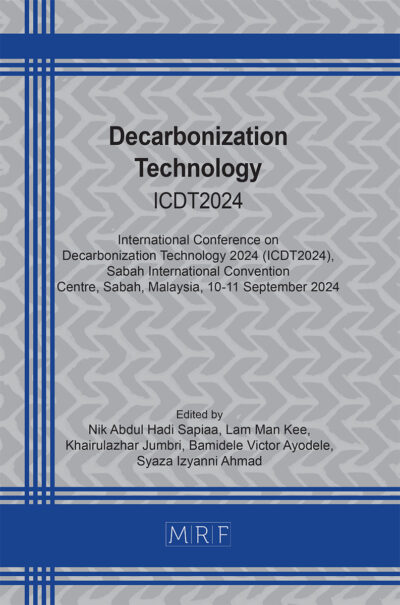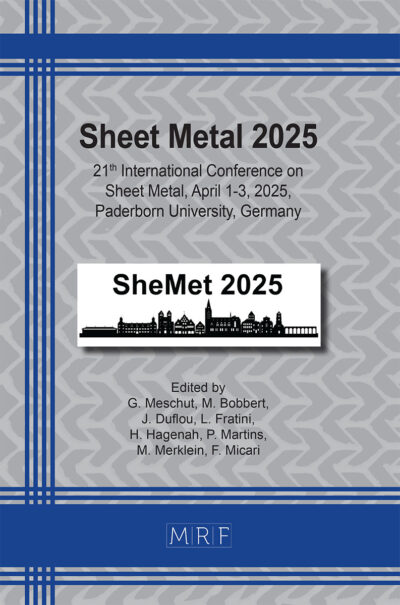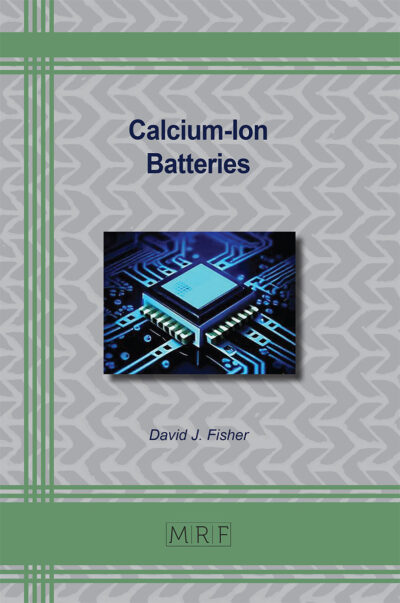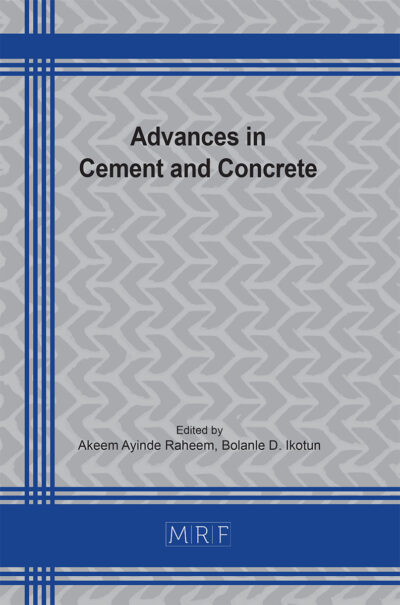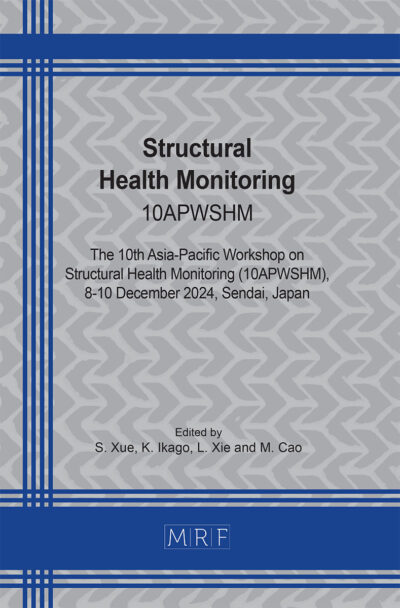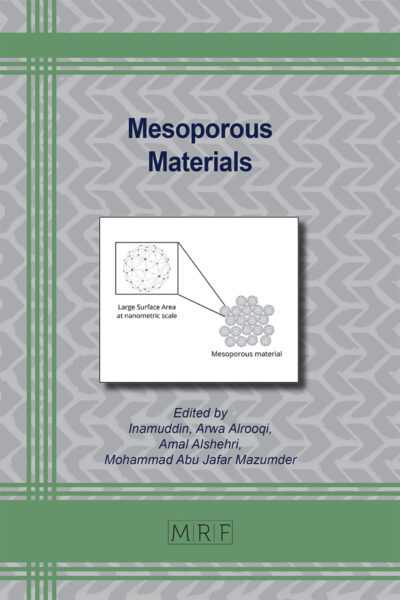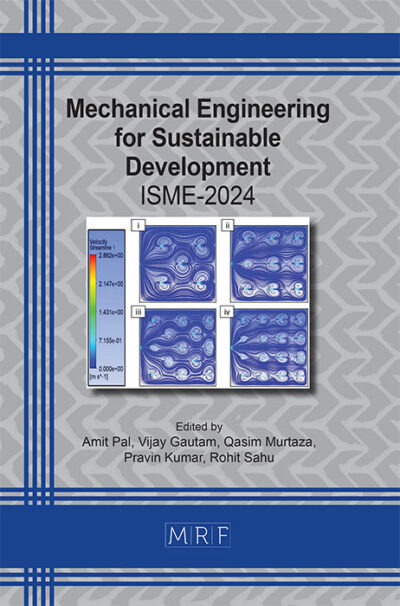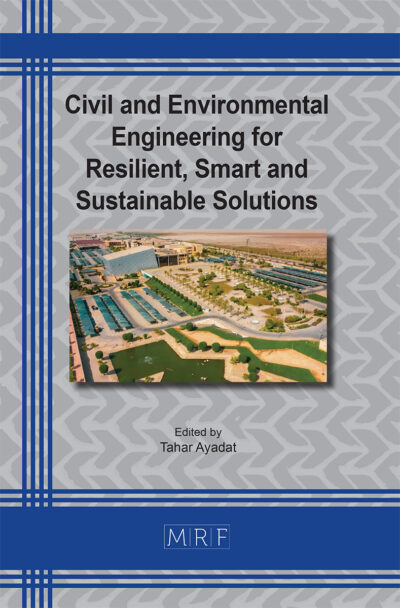Plasma-based technologies for sustainable hydrogen production: A data-driven bibliometric
Habeeb Bolaji Adedayo, Thar Mohammed Albarody, Kamaruzzaman Sopian, Ali Samer Muhsan, Aishat Adebonike Adedayo-Ojo, Nabil Majd Alawi
Abstract. The quest for sustainable hydrogen production has intensified in the past decade, driven by the global energy transition from fossil fuels to hydrogen-based alternatives. This urgency necessitates the exploration of innovative technologies beyond traditional methods. Therefore, this study pioneers a bibliometric analysis to evaluate the potential of plasma-based technologies for sustainable hydrogen production. Methodologically, the systematic data adheres strictly to the PRISMA 2020 framework. The Shiny App of the Bibliometrix R package is used to uncover the performance analysis and science mapping visualization of the bibliometric dataset. The findings revealed 581 published documents following database merging, with 152 records excluded by automated tools and another 152 through screening with PRISMA. This study is of great interest to academic and industrial relevance, as evidenced by 277 documents with annual growth rate (22.57%), authors’ contributions (n = 1,185), co-authorship (30.32%), and average citation rate (n = 23). Notably, microwave plasma emerges as the most dominant technology for hydrogen production from natural gas reforming, achieving a 65% volumetric yield among non-thermal plasma variants, alongside warm plasma (48%) and thermal plasma (67%). Collaborative efforts between China and Australia in energy policy research emphasize the importance of international partnerships in advancing sustainable energy solutions. The emerging research trends in plasma gasification, water splitting, and hydrogen evolution reactions, signal a paradigm shift towards more sustainable, efficient hydrogen production techniques. Ongoing research is poised to enhance efficiency and environmental sustainability, contributing vitally to a net-zero emission future.
Keywords
Plasma Technologies, Hydrogen Production, Sustainable Energy, Merged Dataset, Bibliometric Analysis
Published online 4/25/2025, 26 pages
Copyright © 2025 by the author(s)
Published under license by Materials Research Forum LLC., Millersville PA, USA
Citation: Habeeb Bolaji Adedayo, Thar Mohammed Albarody, Kamaruzzaman Sopian, Ali Samer Muhsan, Aishat Adebonike Adedayo-Ojo, Nabil Majd Alawi, Plasma-based technologies for sustainable hydrogen production: A data-driven bibliometric, Materials Research Proceedings, Vol. 53, pp 17-42, 2025
DOI: https://doi.org/10.21741/9781644903575-2
The article was published as article 2 of the book Decarbonization Technology
![]() Content from this work may be used under the terms of the Creative Commons Attribution 3.0 license. Any further distribution of this work must maintain attribution to the author(s) and the title of the work, journal citation and DOI.
Content from this work may be used under the terms of the Creative Commons Attribution 3.0 license. Any further distribution of this work must maintain attribution to the author(s) and the title of the work, journal citation and DOI.
References
[1] Q. Hassan, S. Algburi, A. Z. Sameen, H. M. Salman, and M. Jaszczur, “Green hydrogen: A pathway to a sustainable energy future,” Int. J. Hydrogen Energy, vol. 50, pp. 310–333, 2024. https://doi.org/10.1016/j.ijhydene.2023.08.321
[2] H. B. Adedayo, S. A. Adio, and B. O. Oboirien, “Energy research in Nigeria: A bibliometric analysis,” Energy Strateg. Rev., vol. 34, no. 100629, pp. 1–18, 2021. https://doi.org/10.1016/j.esr.2021.100629
[3] L. Guo et al., “Hydrogen safety: An obstacle that must be overcome on the road towards future hydrogen economy,” Int. J. Hydrogen Energy, vol. 51, pp. 1055–1078, 2024. https://doi.org/10.1016/j.ijhydene.2023.08.248
[4] C. M. Kalamaras and A. M. Efstathiou, “Hydrogen Production Technologies: Current State and Future Developments,” in Conference Papers in Energy, 2013, pp. 1–9. doi: 10.1155/2013/690627
[5] S. F. Ahmed et al., “Sustainable hydrogen production: Technological advancements and economic analysis,” Int. J. Hydrogen Energy, vol. 47, no. 88, pp. 37227–37255, 2022. https://doi.org/10.1016/j.ijhydene.2021.12.029
[6] I. Dincer and C. Acar, “Review and evaluation of hydrogen production methods for better sustainability,” Int. J. Hydrogen Energy, vol. 40, no. 34, pp. 11094–11111, 2014. https://doi.org/10.1016/j.ijhydene.2014.12.035
[7] G. F. A. C. D. I. Naterer, “Review of photocatalytic water-splitting methods for sustainable hydrogen production,” Int. J. Energy Res., vol. 40, no. 11, pp. 1449–1473, 2016. https://doi.org/10.1002/er.3549
[8] D. W. M. W. G. S. Z. Z. Y. Xu, “Review of renewable energy-based hydrogen production processes for sustainable energy innovation,” Glob. Energy Interconnect., vol. 2, no. 5, pp. 436–443, 2019. https://doi.org/10.1016/j.gloei.2019.11.019
[9] M. S. M. N. S. G. A. O. E. E. I. A. A. A. H. B. P. S. A.-S. D. Kamal, “Hydrogen production, transportation, utilization, and storage: Recent advances towards sustainable energy,” J. Energy Storage, vol. 73, p. 109207, 2023. https://doi.org/10.1016/j.est.2023.109207
[10] M. M. A. B. E. M. P. A. B. A. Fermeglia, “Sustainability analysis of hydrogen production processes,” Int. J. Hydrogen Energy, vol. 54, pp. 540–553, 2024. https://doi.org/10.1016/j.ijhydene.2023.06.122
[11] J. Mizeraczyk and M. Jasiński, “Plasma processing methods for hydrogen production,” EPJ Appl. Phys., vol. 75, no. 2, pp. 1–7, 2016. https://doi.org/10.1051/epjap/2016150561
[12] J. Mizeraczyk, K. Urashima, M. Jasiński, and M. Dors, “Hydrogen Production from gaseos fuel by plasmas- A review,” Int. J. Plasma Environ. Sci. Technol., vol. 8, no. 2, pp. 89–97, 2014
[13] G. Chen, X. Tu, G. Homm, and A. Weidenkaff, “Plasma pyrolysis for a sustainable hydrogen economy,” Nat. Rev. Mater., vol. 7, no. 5, pp. 333–334, 2022. https://doi.org/10.1038/s41578-022-00439-8
[14] E. Tatarova, N. Bundaleska, J. P. Sarrette, and C. M. Ferreira, “Plasmas for environmental issues: from hydrogen production to 2D materials assembly,” Plasma Sources Sci. Technol., vol. 23, no. 6, p. 063002, 2014. https://doi.org/10.1088/0963-0252/23/6/063002
[15] K. W. K. K. J. F. H. M. U. D. Š. M. O. K. (Ken) H. S. C. U. Č. M. L. B. F. A. F. P. Becker, “The future for plasma science and technology,” Plasma Process. Polym., vol. 16, no. 1, p. 1800118, 2018. https://doi.org/10.1002/ppap.201800118
[16] A. S. R. Bogaerts, “Plasma technology – a novel solution for CO2 conversion?,” Chem. Soc. Rev., vol. 46, no. 19, pp. 5805–5863, 2017. https://doi.org/10.1039/C6CS00066E
[17] D. Czylkowski, B. Hrycak, R. Miotk, M. Jasiński, J. Mizeraczyk, and M. Dors, “Microwave plasma for hydrogen production from liquids,” Nukleonika, vol. 61, no. 2, pp. 185–190, 2016. https://doi.org/10.1515/nuka-2016-0031
[18] B. Sun, X. Zhao, Y. Xin, and X. Zhu, “Large capacity hydrogen production by microwave discharge plasma in liquid fuels ethanol,” Int. J. Hydrogen Energy, vol. 42, no. 38, pp. 24047–24054, 2017. https://doi.org/10.1016/j.ijhydene.2017.08.052
[19] J. Kierzkowska-Pawlak, H., Tyczkowski, A. Jarota, and H. Abramczyk, “Hydrogen production in liquid water by femtosecond laser-induced plasma,” Appl. Energy, vol. 249, pp. 24–31, 2019. https://doi.org/10.1016/j.apenergy.2019.04.010
[20] K.-H. Chung, S. S. Lam, Y.-K. Park, and S.-C. Jung, “Enhanced hydrogen production from cracking of liquid toluene by applying liquid plasma and perovskite catalysts,” Int. J. Hydrogen Energy, vol. 52, pp. 612–621, 2024. https://doi.org/10.1016/j.ijhydene.2023.05.092
[21] C. Du, J. Mo, and H. Li, “Renewable Hydrogen Production by Alcohols Reforming Using Plasma and Plasma-Catalytic Technologies: Challenges and Opportunities,” Chem. Rev., vol. 115, no. 3, pp. 1503–1542, 2014. https://doi.org/10.1021/cr5003744
[22] G. Akay, “Hydrogen, Ammonia and Symbiotic/Smart Fertilizer Production Using Renewable Feedstock and CO2 Utilization through Catalytic Processes and Nonthermal Plasma with Novel Catalysts and In Situ Reactive Separation: A Roadmap for Sustainable and Innovation-Base,” Catalysts, vol. 13, no. 9, pp. 1287–1287, 2023. https://doi.org/10.3390/catal13091287
[23] A. Midilli, H. Kucuk, M. E. Topal, U. Akbulut, and I. Dincer, “A comprehensive review on hydrogen production from coal gasification: Challenges and Opportunities,” Int. J. Hydrogen Energy, vol. 46, no. 50, pp. 25385–25412, 2021. https://doi.org/10.1016/j.ijhydene.2021.05.088
[24] J. Favas, E. Monteiro, and A. Rouboa, “Hydrogen production using plasma gasification with steam injection,” Int. J. Hydrogen Energy, vol. 42, no. 16, pp. 10997–11005, 2017. https://doi.org/10.1016/j.ijhydene.2017.03.109
[25] V. Galvita, V. E. Messerle, and A. B. Ustimenko, “Hydrogen production by coal plasma gasification for fuel cell technology,” Int. J. Hydrogen Energy, vol. 32, no. 16, pp. 3899–3906, 2007. https://doi.org/10.1016/j.ijhydene.2007.05.039
[26] S. Yousef, A. Tamošiūnas, M. Aikas, R. Uscila, D. Gimžauskaitė, and K. Zakarauskas, “Plasma steam gasification of surgical mask waste for hydrogen-rich syngas production,” Int. J. Hydrogen Energy, vol. 49, pp. 1375–1386, 2024. https://doi.org/10.1016/j.ijhydene.2023.09.288
[27] K. Yin et al., “Thermodynamic analysis of a plasma co-gasification process for hydrogen production using sludge and food waste as mixed raw materials,” Renew. Energy, vol. 222, pp. 119893–119893, 2024. https://doi.org/10.1016/j.renene.2023.119893
[28] P. V. Mallick, R., “Experimental studies on CO2-thermal plasma gasification of refused derived fuel feedstock for clean syngas production,” Energy, vol. 288, pp. 129766–129766, 2024. https://doi.org/10.1016/j.energy.2023.129766
[29] Y. Wang et al., “Hydrogen-rich gas production from tar model compound disintegrates over low-temperature plasma in dielectric barrier discharge reactor,” Int. J. Hydrogen Energy, vol. 58, pp. 678–687, 2024. https://doi.org/10.1016/j.ijhydene.2024.01.250
[30] Z. Wang et al., “H2 production from ammonia decomposition with Mo2N catalyst driven by dielectric barrier discharge plasma,” Int. J. Hydrogen Energy, vol. 49, pp. 1375–1385, 2024. https://doi.org/10.1016/j.ijhydene.2023.06.173
[31] B. Sarmiento, J. J. Brey, I. G. Viera, A. R. González-Elipe, J. Cotrino, and V. J. Rico, “Hydrogen production by reforming of hydrocarbons and alcohols in a dielectric barrier discharge,” J. Power Sources, vol. 169, no. 1, pp. 140–143, 2007. https://doi.org/10.1016/j.jpowsour.2007.01.059
[32] A. H. Khoja et al., “Hydrogen Production from Methane Cracking in Dielectric Barrier Discharge Catalytic Plasma Reactor Using a Nanocatalyst,” Energies, vol. 13, no. 22, p. 5921, 2020. https://doi.org/10.3390/en13225921
[33] Y. Nishida, H.-C. Chiang, T.-C. Chen, and C.-Z. Cheng, “Efficient Production of Hydrogen by DBD Type Plasma Discharges,” IEEE Trans. Plasma Sci., vol. 42, no. 12, pp. 3765–3771, 2014. https://doi.org/10.1109/tps.2014.2354695
[34] K. Khan, A., Rashid, M., Rehman, A., Saleem, F., Salman Razza Naqvi, Afzal, S., Qazi, U. Y., Ahmad, W., Iftikhar Nisar Butt, Mahmood, “A comprehensive review of the methane decomposition using a gliding arc discharge reactor for hydrogen generation,” J. Energy Inst., vol. 109, pp. 101309–10130, 2023. https://doi.org/10.1016/j.joei.2023.101309
[35] W. Baowei, W., Shize, L., Yeping, P., Chengyu, “Gliding arc plasma reforming of toluene for on-board hydrogen production,” Int. J. Hydrogen Energy, vol. 45, no. 11, pp. 6138–6147, 2020. https://doi.org/10.1016/j.ijhydene.2019.12.184
[36] C. J. Zou, J. J., Zhang, Y. P., Liu, “Hydrogen production from partial oxidation of dimethyl ether using corona discharge plasma,” Int. J. Hydrogen Energy, vol. 32, no. 8, pp. 958–964, 2007. https://doi.org/10.1016/j.ijhydene.2006.09.023
[37] Y.-H. Chang, K.-L., Lin, Y.-C., Shangdiar, S., Chen, S.-C., Hsiao, “Hydrogen production from dry spirulina algae with downstream feeding in microwave plasma reactor assisted under atmospheric pressure,” J. Energy Inst., vol. 93, no. 4, pp. 1597–1601, 2020. https://doi.org/10.1016/j.joei.2020.01.021
[38] H. Putra, A. E. E., Nomura, S., Mukasa, S., Toyota, “Hydrogen production by radio frequency plasma stimulation in methane hydrate at atmospheric pressure,” Int. J. Hydrogen Energy, vol. 37, no. 21, pp. 16000–16005, 2012. https://doi.org/10.1016/j.ijhydene.2012.07.099
[39] N. Longmier, B. W., Gallimore, A. D., Hershkowitz, “Hydrogen production from methane using an RF plasma source in total nonambipolar flow,” Plasma Sources Sci. Technol., vol. 21, no. 1, p. 015007, 2012. https://doi.org/10.1088/0963-0252/21/1/015007
[40] S. Heijkers, M. Aghaei, and A. Bogaerts, “Plasma-Based CH4 Conversion into Higher Hydrocarbons and H2: Modeling to Reveal the Reaction Mechanisms of Different Plasma Sources,” J. Phys. Chem. C, vol. 124, no. 13, pp. 7016–7030, 2020. https://doi.org/10.1021/acs.jpcc.0c00082
[41] W. Zhou, Z., Zhang, J., Ye, T., Zhao, P., Xia, “Hydrogen production by reforming methane in a corona inducing dielectric barrier discharge and catalyst hybrid reactor,” Chinese Sci. Bull., vol. 56, no. 20, pp. 2162–2166, 2011. https://doi.org/10.1007/s11434-011-4485-0
[42] E. Blanquet, M. A. Nahil, and P. T. Williams, “Enhanced hydrogen-rich gas production from waste biomass using pyrolysis with non-thermal plasma-catalysis,” Catal. Today, vol. 337, pp. 216–224, 2019. https://doi.org/10.1016/j.cattod.2019.02.033
[43] W. Li et al., “Non-thermal plasma assisted catalytic water splitting for clean hydrogen production at near ambient conditions,” J. Clean. Prod., vol. 387, pp. 135913–135913, 2023. https://doi.org/10.1016/j.jclepro.2023.135913
[44] O. Khalifeh, H. Taghvaei, A. Mosallanejad, M. R. Rahimpour, and A. Shariati, “Extra pure hydrogen production through methane decomposition using nanosecond pulsed plasma and Pt-Re catalyst,” Chem. Eng. J., vol. 294, pp. 132–145, 2016. https://doi.org/10.1016/j.cej.2016.02.077
[45] N. Zhu, Y. Hong, F. Qian, and J. Liang, “Research progress on plasma-catalytic hydrogen production from ammonia: Influencing factors and reaction mechanism,” Int. J. Hydrogen Energy, vol. 59, pp. 791–807, 2024. https://doi.org/10.1016/j.ijhydene.2024.02.016
[46] M. C. R. Younas, “Emerging trends and technologies in big data processing,” Concurr. Comput. Pract. Exp., vol. 27, no. 8, pp. 2078–2091, 2014. https://doi.org/10.1002/cpe.3398
[47] J. G. Y. X. Q. G. J. Y. Y. Li, “Progress and framework of clean energy production: Bibliometric analysis from 2002 to 2022.,” Energy Strateg. Rev., pp. 101270–101270, 2024. https://doi.org/10.1016/j.esr.2023.101270
[48] L. J. M. P. W. Jaramillo, “Adaptive Forecasting in Energy Consumption: A Bibliometric Analysis and Review,” Data, vol. 9, no. 1, p. 13, 2024. https://doi.org/10.3390/data9010013
[49] Y. Z. D. J. M. L. G. Tang, “An advanced bibliometric analysis and future research insights on safety of hydrogen energy,” J. Energy Storage, vol. 77, pp. 109833–109833, 2024. https://doi.org/10.1016/j.est.2023.109833
[50] N. Donthu, S. Kumar, D. Mukherjee, N. Pandey, and W. M. Lim, “How to conduct a bibliometric analysis: An overview and guidelines,” J. Bus. Res., vol. 133, pp. 285–296, 2021. https://doi.org/10.1016/j.jbusres.2021.04.070
[51] A. Martín-Martín, M. Thelwall, E. Orduna-Malea, and E. Delgado López-Cózar, Google Scholar, Microsoft Academic, Scopus, Dimensions, Web of Science, and OpenCitations’ COCI: a multidisciplinary comparison of coverage via citations, vol. 126, no. 1. Springer International Publishing, 2021. doi: 10.1007/s11192-020-03690-4
[52] R. Pranckutė, “Web of Science (Wos) and Scopus: The Titans of Bibliographic Information in Today’s Academic World,” Publications, vol. 9, no. 12, pp. 1–59, 2021. https://doi.org/10.3390/publications9010012
[53] S. Echchakoui, “Why and how to merge Scopus and Web of Science during bibliometric analysis: the case of sales force literature from 1912 to 2019,” J. Mark. Anal., vol. 8, no. 3, pp. 165–184, 2020. https://doi.org/10.1057/s41270-020-00081-9
[54] H. Kasaraneni and S. Rosaline, “Automatic merging of Scopus and Web of Science data for simplified and effective bibliometric analysis,” Ann. Data Sci., vol. 11, no. 3, pp. 785–802, 2024. https://doi.org/10.1007/s40745-022-00438-0
[55] M. J. Page et al., “The PRISMA 2020 statement: An updated guideline for reporting systematic reviews,” Br. Med. J., vol. 372, no. 71, pp. 1–9, 2021. https://doi.org/10.1136/bmj.n71
[56] L. O. Soares, A. da C. Reis, P. S. Vieira, L. Hernández-Callejo, and R. A. M. Boloy, “Electric Vehicle Supply Chain Management: A Bibliometric and Systematic Review,” Energies, vol. 16, no. 4, p. 1563, 2023. https://doi.org/10.3390/en16041563
[57] A. D. Samala et al., “Metaverse Technologies in Education: A Systematic Literature Review Using PRISMA,” Int. J. Emerg. Technol. Learn., vol. 18, no. 5, pp. 231–252, 2023. https://doi.org/10.3991/IJET.V18I05.35501
[58] N. R. Haddaway, M. J. Page, C. C. Pritchard, and L. A. McGuinness, “PRISMA2020: An R package and Shiny app for producing PRISMA 2020-compliant flow diagrams, with interactivity for optimised digital transparency and Open Synthesis,” Campbell Syst. Rev., vol. 18, no. 2, p. e1230, 2022. https://doi.org/10.1002/cl2.1230
[59] M. Aria and C. Cuccurullo, “bibliometrix: An R-tool for comprehensive science mapping analysis,” J. Informetr., vol. 11, no. 4, pp. 959–975, 2017. https://doi.org/10.1016/j.joi.2017.08.007
[60] M. A. Rojas-Sánchez, P. R. Palos-Sánchez, and J. A. Folgado-Fernández, Systematic literature review and bibliometric analysis on virtual reality and education, vol. 28, no. 1. Springer US, 2023. doi: 10.1007/s10639-022-11167-5
[61] C. Bota-Avram, “Bibliometric analysis of sustainable business performance: where are we going? A science map of the field,” Econ. Res. Istraz. , vol. 36, no. 1, pp. 2137–2176, 2023. https://doi.org/10.1080/1331677X.2022.2096094
[62] S. A. Samsul, N. Yahaya, and H. Abuhassna, “Education big data and learning analytics: a bibliometric analysis,” Humanit. Soc. Sci. Commun., vol. 10, no. 1, pp. 1–11, 2023. https://doi.org/10.1057/s41599-023-02176-x
[63] M. Afjal, “Bridging the financial divide: a bibliometric analysis on the role of digital financial services within FinTech in enhancing financial inclusion and economic development,” Humanit. Soc. Sci. Commun., vol. 10, no. 1, pp. 1–27, 2023. https://doi.org/10.1057/s41599-023-02086-y
[64] P. G. Rutberg et al., “Plasma technologies of solid and liquid toxic waste disinfection,” in IEEE Conference Record – Abstracts. PPPS-2001 Pulsed Power Plasma Science 2001. 28th IEEE International Conference on Plasma Science and 13th IEEE International Pulsed Power Conference (Cat. No.01CH37255), 2001, pp. 1178–1181. doi: 10.1109/ppps.2001.961002
[65] K. Yan, E. J. M. van Heesch, A. J. M. Pemen, and S. A. Nair, “Corona Plasmas: Fundamental Studies and Industrial Applications,” WIT Trans. Ecol. Environ., vol. 56, pp. 110–118, 2002. https://doi.org/10.2495/wm020121
[66] E. J. M. van Heesch et al., “Repetitive pulsed power to serve nano technology, sustainability and hydrogen production,” Dig. Tech. Pap. PPC-2003. 14th IEEE Int. Pulsed Power Conf. (IEEE Cat. No. 03CH37472), vol. 1, pp. 441–444, 2003. https://doi.org/10.1109/ppc.2003.1277746
[67] N. Muradov, F. Smith, G. Bockerman, and K. Scammon, “Thermocatalytic decomposition of natural gas over plasma-generated carbon aerosols for sustainable production of hydrogen and carbon,” Appl. Catal. A Gen., vol. 365, no. 2, pp. 292–300, 2009, [Online]. Available: 10.1016/j.apcata.2009.06.031
[68] H. Kaneko, L. C., Y. Ishikawa, K. Hosogoe, and Y. Tamaura, “Solar H2 Production With Tokyo Tech Rotary-Type Solar Reactor to be Tested Using Solar Concentration System at CSIRO in Australia,” in In Energy Sustainability, 2009, pp. 491–496. doi: 10.1115/es2009-90420
[69] Q. Wang, H. Shi, B. Yan, Y. Jin, and Y. Cheng, “Steam enhanced carbon dioxide reforming of methane in DBD plasma reactor,” Int. J. Hydrogen Energy, vol. 36, no. 14, pp. 8301–8306, 2011. https://doi.org/10.1016/j.ijhydene.2011.04.084
[70] J. F. Pacheco, G. Soria, M. Pacheco, H. Ricardo Rueda Valdivia, Ramos, F., and M. Frías, M. Suarez Durán, Hidalgo, “Greenhouse gas treatment and H2 production, by warm plasma reforming,” Int. J. Hydrogen Energy, vol. 40, p. 2015, 2015. https://doi.org/10.1016/j.ijhydene.2015.08.062
[71] N. Tippayawong, E. Chaiya, P. Thanompongchart, and P. Khongkrapan, “Sustainable Energy from Biogas Reforming in a Microwave Discharge Reactor,” in Procedia Engineering, 2015, pp. 120–127. doi: 10.1016/j.proeng.2015.08.410
[72] B. Ibrahimoglu, A. Cucen, and M. Z. Yilmazoglu, “Numerical modeling of a downdraft plasma gasification reactor,” Int. J. Hydrogen Energy, vol. 42, no. 4, pp. 2583–2591, 2017. https://doi.org/10.1016/j.ijhydene.2016.06.224
[73] J. Sun et al., “Novel treatment of a biomass tar model compound via microwave-metal discharges,” Fuel, pp. 121–125, 2017. https://doi.org/10.1016/j.fuel.2017.06.075
[74] S. Liu, D. Mei, Y. Wang, Y. Ma, and X. Tu, “Plasma reforming of toluene as a model tar compound from biomass gasification: effect of CO2 and steam,” Waste Dispos. Sustain. Energy, vol. 1, no. 2, pp. 133–141, 2019. https://doi.org/10.1007/s42768-019-00011-1
[75] A. Inayat, A., Tariq, R., Khan, Z., Ghenai, C., Kamil, M., Jamil, F., Shanableh, “A comprehensive review on advanced thermochemical processes for bio-hydrogen production via microwave and plasma technologies,” Biomass Convers. Biorefinery, pp. 1–10, 2020. https://doi.org/10.1007/s13399-020-01175-1
[76] S. Vecten, M. Wilkinson, N. Bimbo, R. Dawson, and B. M. Herbert, “Hydrogen-rich syngas production from biomass in a steam microwave-induced plasma gasification reactor.,” Bioresour. Technol., vol. 337, p. 125324, 2021. https://doi.org/10.1016/j.biortech.2021.125324
[77] H. Liu, D. Guo, X. Ma, Y. Wang, and J. Xie, “Effect of non-thermal plasma on carbon dioxide reforming of methane to hydrogen,” Proc. Inst. Civ. Eng., vol. 174, no. 2, pp. 67–78, 2021. https://doi.org/10.1680/jener.19.00030
[78] A. Midilli, H. Kucuk, M. E. Topal, U. Akbulut, and I. Dincer, “A comprehensive review on hydrogen production from coal gasification: Challenges and Opportunities,” Int. J. Hydrogen Energy, vol. 46, no. 50, pp. 25385–25412, 2021. https://doi.org/10.1016/j.ijhydene.2021.05.088
[79] S. J. Yoon and J.-G. Lee, “Hydrogen-rich syngas production through coal and charcoal gasification using microwave steam and air plasma torch,” Int. J. Hydrogen Energy, vol. 37, no. 22, pp. 17093–17100, 2012. https://doi.org/10.1016/j.ijhydene.2012.08.054
[80] J. Qiu et al., “Coal gasification in steam and air medium under plasma conditions: a preliminary study,” Fuel Process. Technol., vol. 85, no. 8–10, pp. 969–982, 2004. https://doi.org/10.1016/j.fuproc.2003.11.035
[81] M. El-Shafie, S. Kambara, and Y. Hayakawa, “Energy and exergy analysis of hydrogen production from ammonia decomposition systems using non-thermal plasma,” Int. J. Hydrogen Energy, vol. 46, no. 57, pp. 29361–29375, 2020. https://doi.org/10.1016/j.ijhydene.2020.08.249
[82] V. S. Sikarwar, A. Reichert, M. Pohorely, E. Meers, N. L. Ferreira, and M. Jeremias, “Equilibrium modeling of thermal plasma assisted co-valorization of difficult waste streams for syngas production,” Sustain. Energy Fuels, vol. 5, no. 18, pp. 4650–4660, 2021. https://doi.org/10.1039/d1se00998b
[83] G. Xu et al., “Self-perpetuating carbon foam microwave plasma conversion of hydrocarbon wastes into useful fuels and chemicals.,” Environ. Sci. Technol., vol. 55, no. 9, pp. 6239–6247, 2021. https://doi.org/10.1021/acs.est.0c06977
[84] M. Younas et al., “Hydrogen Production through Water Vapors using Optimized Corona-DBD Hybrid Plasma Micro-Reactor,” Fuel, vol. 331, p. 125838, 2023. https://doi.org/10.1016/j.fuel.2022.125838
[85] N. Budhraja, A. Pal, and R. S. Mishra, “Plasma reforming for hydrogen production: Pathways, reactors and storage,” Int. J. Hydrogen Energy, vol. 48, no. 7, pp. 2467–2482, 2023. https://doi.org/10.1016/j.ijhydene.2022.10.143
[86] P. K. Panicker and A. Magid, “Microwave plasma gasification for the restoration of urban rivers and lakes, and the elimination of oceanic garbage patches,” Energy Sustain., vol. 50220, p. V001T02A011, 2016. https://doi.org/10.1115/ES2016-59632
[87] P. K. Panicker and A. Magid, “Microwave plasma gasification for enhanced oil recovery and sustainable waste management,” in ASME 2016 10th International Conference on Energy Sustainability, ES 2016, collocated with the ASME 2016 Power Conference and the ASME 2016 14th International Conference on Fuel Cell Science, Engineering and Technology, 2016, pp. 1–13. doi: 10.1115/ES2016-59630
[88] G. Akay, “Sustainable ammonia and advanced symbiotic fertilizer production using catalytic multi-reaction-zone reactors with nonthermal plasma and simultaneous reactive separation,” ACS Sustain. Chem. Eng., vol. 5, no. 12, pp. 11588–11606, 2017. https://doi.org/10.1021/acssuschemeng.7b02962
[89] R. Peng, P., Chen, P., Schiappacasse, C., Zhou, N., Anderson, E., Chen, D., Liu, J., Cheng, Y., Hatzenbeller, R., Addy, M., Zhang, Y., Liu, Y., Ruan, “A review on the non-thermal plasma-assisted ammonia synthesis technologies,” J. Clean. Prod., vol. 177, pp. 597–609, 2018. https://doi.org/10.1016/j.jclepro.2017.12.229
[90] A. George et al., “A Review of Non-Thermal Plasma Technology: A novel solution for CO2 conversion and utilization,” Renew. Sustain. Energy Rev., vol. 135, p. 109702, 2021. https://doi.org/10.1016/j.rser.2020.109702
[91] B. Tabu et al., “Hydrogen from cellulose and low-density polyethylene via atmospheric pressure nonthermal plasma,” Int. J. Hydrogen Energy, vol. 49, pp. 745–763, 2024. https://doi.org/10.1016/j.ijhydene.2023.07.173
[92] B. Tabu et al., “Nonthermal atmospheric plasma reactors for hydrogen production from low-density polyethylene,” Int. J. Hydrogen Energy, vol. 47, no. 94, pp. 39743–39757, 2022. https://doi.org/10.1016/j.ijhydene.2022.09.161
[93] M. Boscherini, A. Storione, M. Minelli, F. Miccio, and F. Doghieri, “New Perspectives on Catalytic Hydrogen Production by the Reforming, Partial Oxidation and Decomposition of Methane and Biogas,” Energies, vol. 16, no. 17, p. 6375, 2023. https://doi.org/10.3390/en16176375
[94] D. A. Gonzalez-Casamachin, T. Qin, W. M. Huang, S. Rangarajan, L. Zhang, and J. Baltrusaitis, “Actively Learned Optimal Sustainable Operation of Plasma-Catalyzed Methane Bireforming on La0. 7Ce0. 3NiO3 Perovskite,” ACS Sustain. Chem. Eng., vol. 12, no. 1, pp. 610–622, 2023. https://doi.org/10.1021/acssuschemeng.3c06929
[95] H. M. Nguyen, A. Omidkar, W. Li, S. Meng, Z. Li, and H. Song, “Non-thermal plasma assisted catalytic nitrogen fixation with methane at ambient conditions,” Chem. Eng. J., vol. 471, pp. 144748–144748, 2023. https://doi.org/10.1016/j.cej.2023.144748
[96] H. M. Nguyen, A. Omidkar, and H. Song, “Technical Challenges and Prospects in Sustainable Plasma Catalytic Ammonia Production from Methane and Nitrogen,” Chempluschem, vol. 88, no. 7, p. 2023, 2023. https://doi.org/10.1002/cplu.202300129
[97] E. Meloni, L. Cafiero, M. Martino, and V. Palma, “Structured Catalysts for Non-Thermal Plasma-Assisted Ammonia Synthesis,” Energies, vol. 16, no. 7, pp. 3218–3218, 2023. https://doi.org/10.3390/en16073218
[98] K. P. Bhatt, S. Patel, D. S. Upadhyay, and R. N. Patel, “In-depth analysis of the effect of catalysts on plasma technologies for treatment of various wastes,” J. Environ. Manage., vol. 344, pp. 118335–118335, 2023. https://doi.org/10.1016/j.jenvman.2023.118335
[99] J. Ding et al., “Sustainable ammonia synthesis from air by the integration of plasma and electrocatalysis techniques,” Inorg. Chem. Front., vol. 10, no. 19, pp. 5762–5771, 2023. https://doi.org/10.1039/d3qi00915g
[100] B. Xu et al., “Plasma-enabled catalytic steam reforming of toluene as a biomass tar surrogate: Understanding the synergistic effect of plasma catalysis,” Chem. Eng. J., vol. 464, pp. 142696–142696, 2023. https://doi.org/10.1016/j.cej.2023.142696
[101] L. L. Sun, H. J. Cui, and Q. S. Ge, “Will China achieve its 2060 carbon neutral commitment from the provincial perspective?,” Adv. Clim. Chang. Res., vol. 13, no. 2, pp. 169–178, 2022. https://doi.org/10.1016/j.accre.2022.02.002
[102] J. Li, M. S. Ho, C. Xie, and N. Stern, “China’s flexibility challenge in achieving carbon neutrality by 2060,” Renew. Sustain. Energy Rev., vol. 158, no. October 2021, p. 112112, 2022. https://doi.org/10.1016/j.rser.2022.112112
[103] Ministero dello Luilippe Economico, “Italy ’ s National Energy Strategy: For a more competitive and sustainable energy,” 2013. [Online]. Available: chrome-extension://efaidnbmnnnibpcajpcglclefindmkaj/https://www.mimit.gov.it/images/stories/documenti/SEN_EN_marzo2013.pdf
[104] C. A. Bollino, “The role of the National Energy Strategy in boosting italian economy,” Econ. Policy Energy Environ., vol. 2, no. 2013, pp. 19–35, 2013
[105] B. Haq, N. Salahu Muhammed, J. Liu, and H. Tong Chua, “Enhanced natural gas production using CO2 injection: Application to sustainable hydrogen production,” Fuel, vol. 347, p. 128474, 2023. https://doi.org/10.1016/j.fuel.2023.128474
[106] J. K. Tamala, E. I. Maramag, K. A. Simeon, and J. J. Ignacio, “A bibliometric analysis of sustainable oil and gas production research using VOSviewer,” Clean. Eng. Technol., vol. 7, p. 100437, 2022. https://doi.org/10.1016/j.clet.2022.100437
[107] Y. Hua, M. Oliphant, and E. J. Hu, “Development of renewable energy in Australia and China: A comparison of policies and status,” Renew. Energy, vol. 85, pp. 1044–1051, 2016. https://doi.org/10.1016/j.renene.2015.07.060
[108] M. A. Young and G. Clough, Net Zero Emissions and Free Trade Agreements: Efforts At Integrating Climate Goals By the United Kingdom and Australia, vol. 72, no. 2. 2023. doi: 10.1017/S002058932300012X
[109] B. Senior et al., “Carbon capture and storage in China – Main findings from China- UK Near Zero Emissions Coal (NZEC) initiative,” Energy Procedia, vol. 4, pp. 5956–5965, 2011. https://doi.org/10.1016/j.egypro.2011.02.598
[110] D. Jing et al., “Efficient solar hydrogen production by photocatalytic water splitting: From fundamental study to pilot demonstration,” Int. J. Hydrogen Energy, vol. 35, no. 13, pp. 7087–7097, 2010. https://doi.org/10.1016/j.ijhydene.2010.01.030
[111] L. Yuan, C. Han, M. Q. Yang, and Y. J. Xu, “Photocatalytic water splitting for solar hydrogen generation: fundamentals and recent advancements,” Int. Rev. Phys. Chem., vol. 35, no. 1, pp. 1–36, 2016. https://doi.org/10.1080/0144235X.2015.1127027






